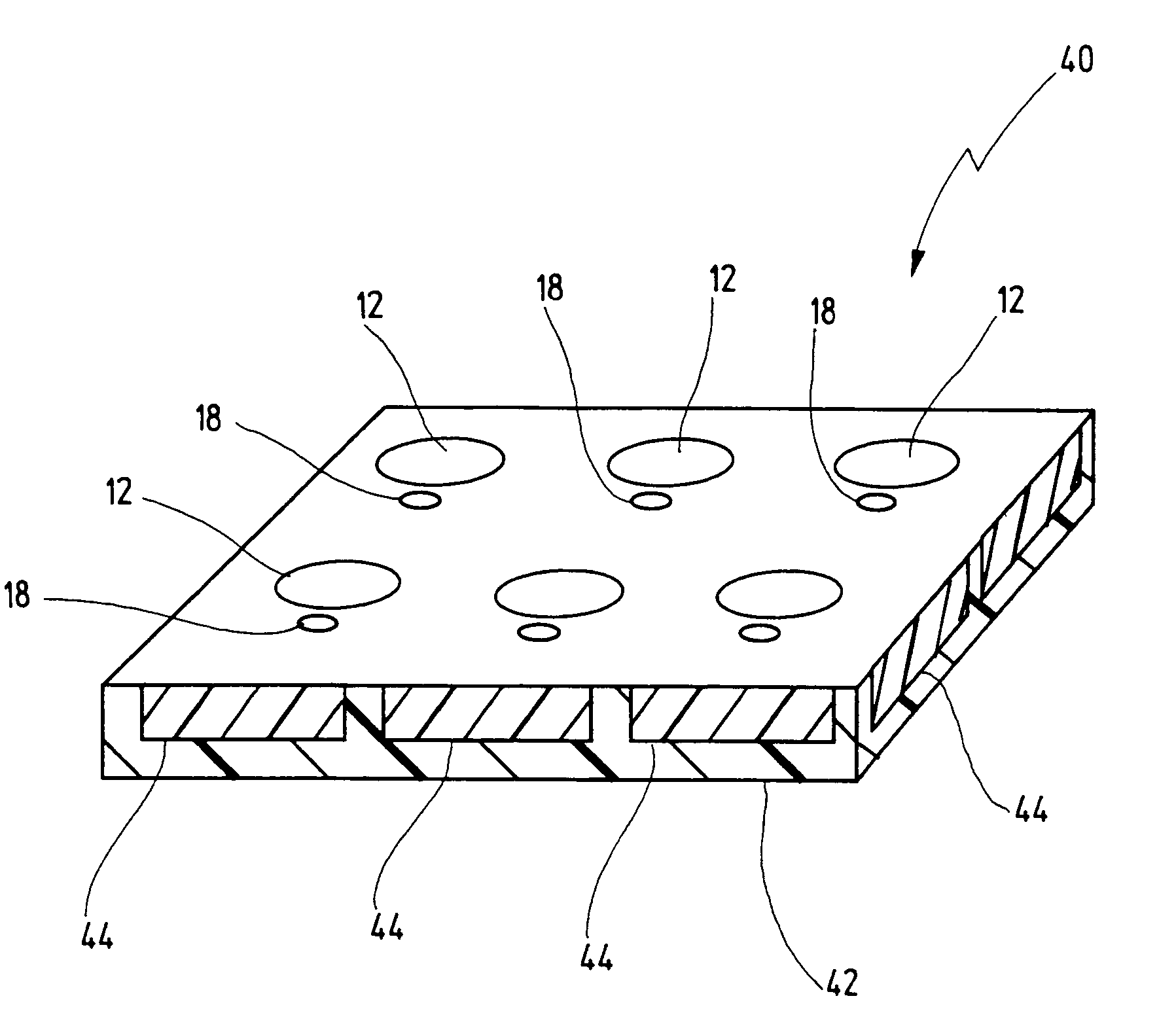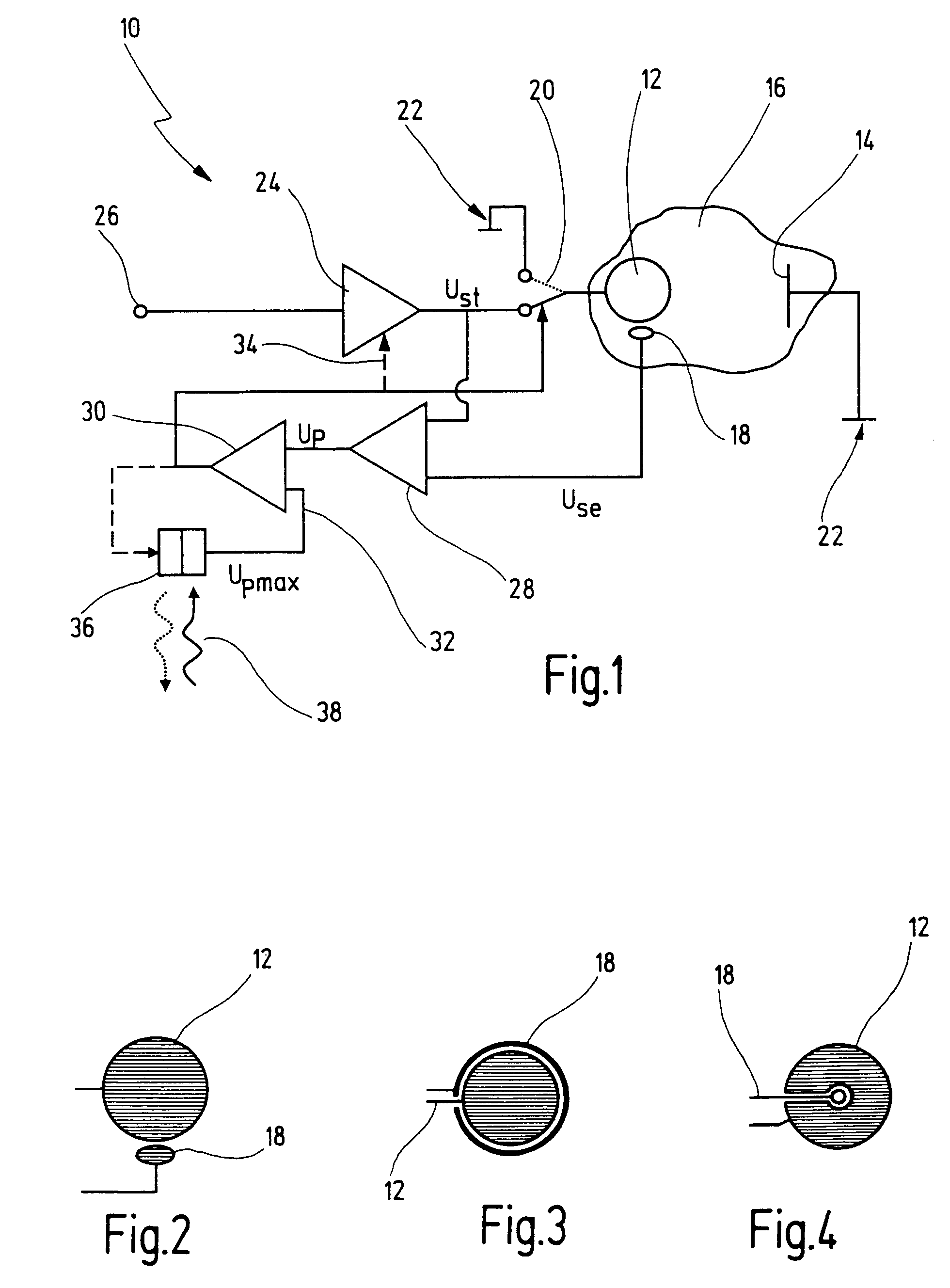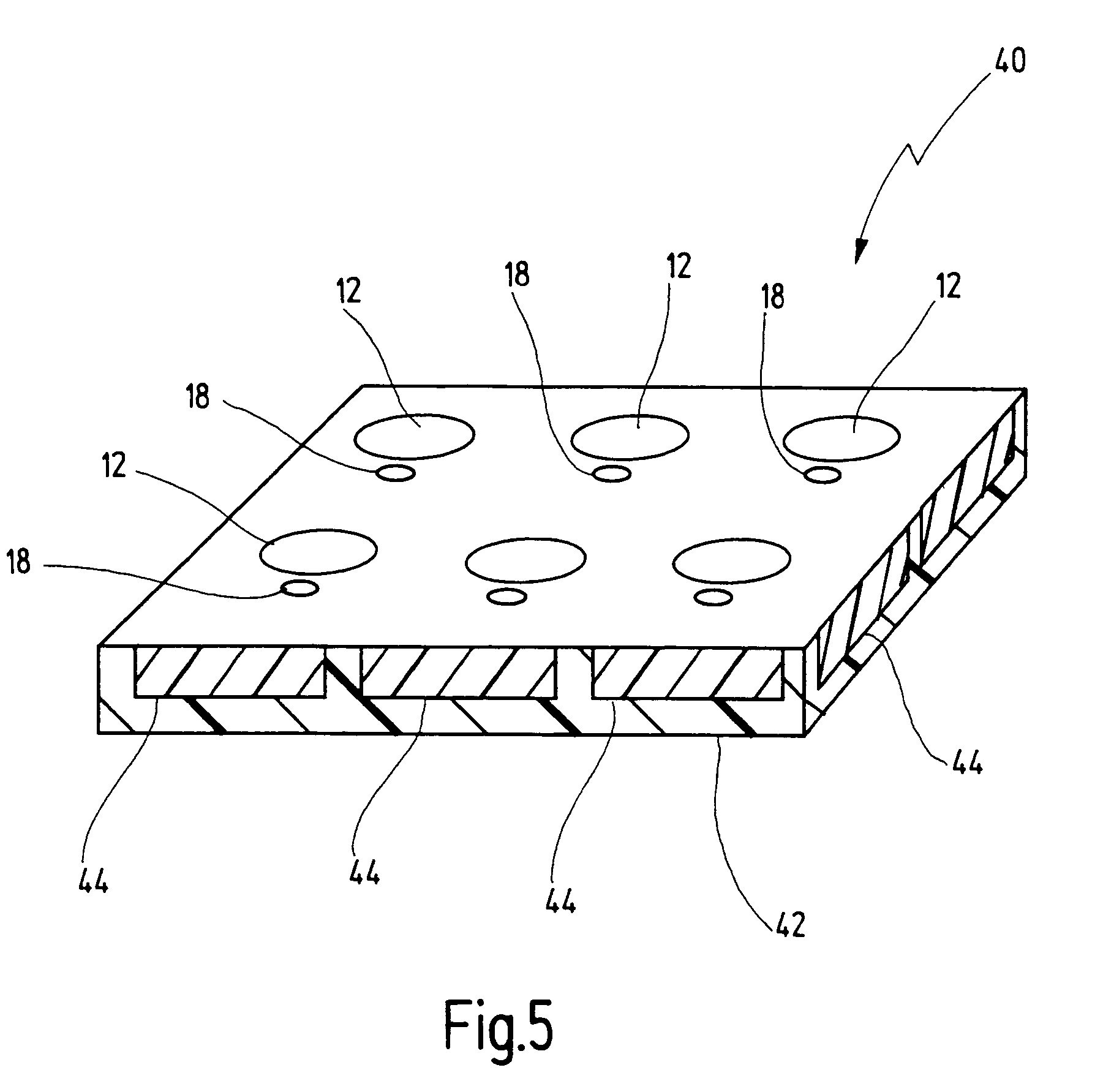Electrode arrangement for electrical stimulation of biological material, and a multi-electrode array for use in such an electrode arrangement
a biological material and electrode arrangement technology, applied in external electrodes, sensors, artificial respiration, etc., can solve the problems of irreversible tissue damage, detection of transient processes above all, and none of the known methods are optimal, and achieve the effect of reliable suppression of undesired reactions
- Summary
- Abstract
- Description
- Claims
- Application Information
AI Technical Summary
Benefits of technology
Problems solved by technology
Method used
Image
Examples
Embodiment Construction
[0059]An electrode arrangement according to the invention is denoted in FIG. 1 in its entirety by the reference numeral 10.
[0060]The electrode arrangement 10 includes a stimulation electrode 12 which is produced using planar technology. However, the invention is not restricted thereto. In other exemplary embodiments, the stimulation electrode and the sensor electrode are arranged in a “3-D arrangement”, that is to say in mutually offset planes. The reference numeral 14 denotes a counter electrode which forms the counter pole (ground) for the stimulation electrode 12. The two electrodes 12, 14 serve the purpose of electrically stimulating biological material, in the present example a cell tissue 16, in a way known per se.
[0061]In a preferred embodiment of the invention, the cell tissue 16 is a tissue in the region of the retina of the human eye. The stimulation electrode 12 and the further subsequently described constituents of the electrode arrangement 10 are implanted in this case ...
PUM
 Login to View More
Login to View More Abstract
Description
Claims
Application Information
 Login to View More
Login to View More - R&D
- Intellectual Property
- Life Sciences
- Materials
- Tech Scout
- Unparalleled Data Quality
- Higher Quality Content
- 60% Fewer Hallucinations
Browse by: Latest US Patents, China's latest patents, Technical Efficacy Thesaurus, Application Domain, Technology Topic, Popular Technical Reports.
© 2025 PatSnap. All rights reserved.Legal|Privacy policy|Modern Slavery Act Transparency Statement|Sitemap|About US| Contact US: help@patsnap.com



